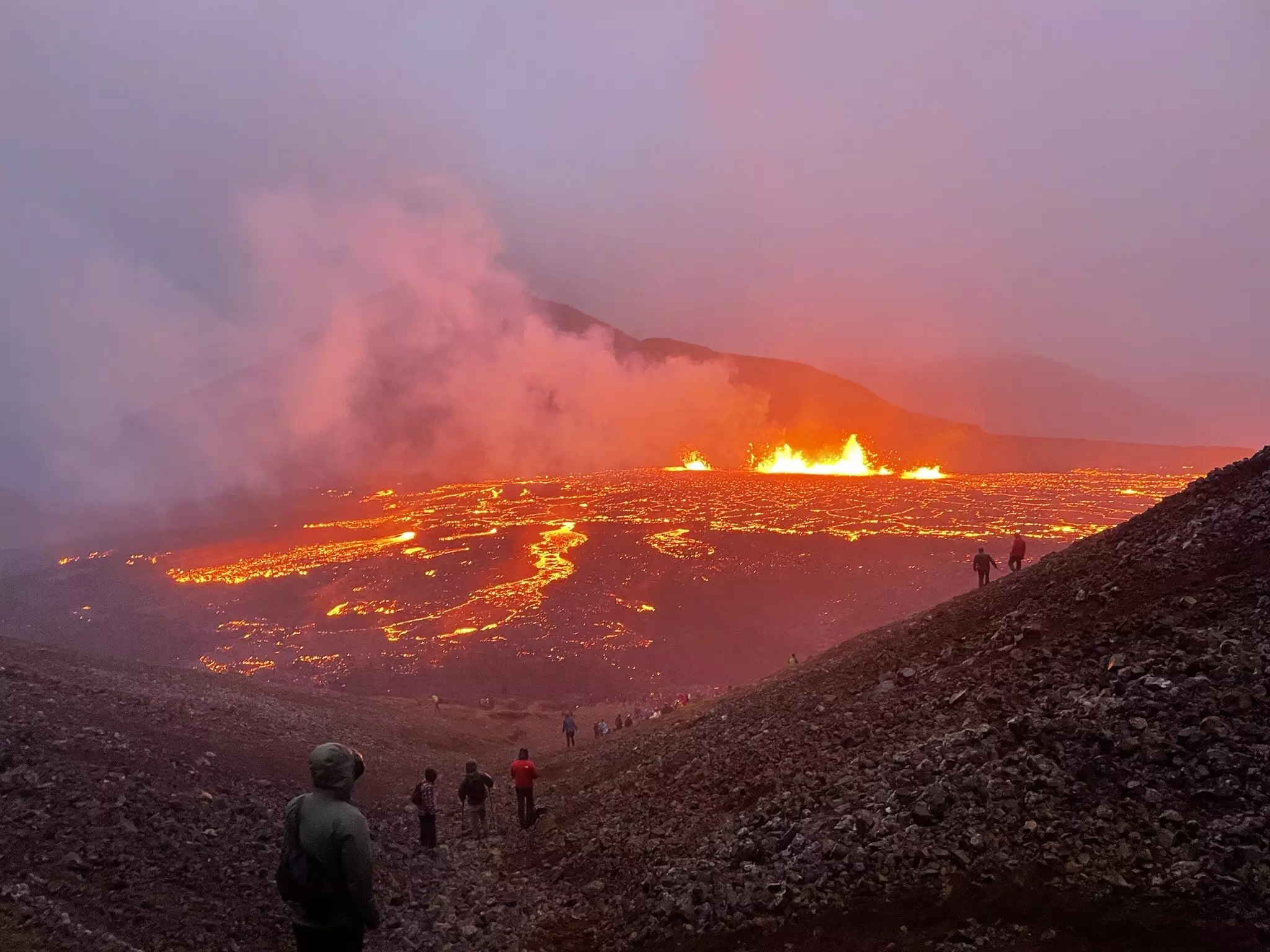In early 2021, the Fagradalsfjall volcano on Iceland’s Reykjanes Peninsula began a relentless show of nature’s might with its fiery eruptions that captivated scientists and fascinated onlookers around the world. These “Fagradalsfjall Fires” have become a focal point for researchers at UC San Diego’s Scripps Institution of Oceanography, who have recently made groundbreaking discoveries regarding the geological processes behind this explosive event. Their research, published in the journal *Nature*, sheds new light on the dynamics of magma movements and crust interactions, challenging long-standing assumptions about volcanic activity.
Revisiting The Conventional Wisdom
Traditionally, volcanologists believed that eruptions like those at Fagradalsfjall were driven by magma rising directly from the mantle without significant interaction with the Earth’s crust. However, the continuous collection and analysis of lava samples revealed a different narrative — one where magma pools and melts beneath the surface, indicating a more complex system than previously understood. James Day, a prominent geologist involved in the research, likened the process of studying the lavas to taking blood samples from a living organism. “It’s a bit like taking regular measurements of someone’s blood,” Day remarked, highlighting that every sample tells a tale of the volcanic system’s health and dynamics.
Unraveling the Isotopic Enigma
To decode the volcanic history encapsulated in the lavas, Day and his team employed an innovative approach by analyzing the isotopic composition of osmium and rhenium. This exploration brings to the fore a fascinating aspect of geology — the distinct behaviors of isotopes during melting processes. Rhenium, known for its affinity to the crust, contrasts with osmium, allowing scientists to decipher the presence of crustal material, thereby reshaping their understanding of eruption origins. What was initially expected to reveal mantle signatures instead illuminated the significant contamination of early lavas by crust samples, suggesting a remarkable interplay between magma and Earth’s varying layers.
A Window into Future Eruptions
The implications of this research stretch far beyond Fagradalsfjall. It not only enriches the scientific narrative surrounding Iceland’s eruptions but poses critical questions about volcanic behavior globally. Day’s findings, which correlate with similar observations from eruptions in La Palma and Mauna Loa, indicate that the act of magma pooling beneath the surface may be a prevalent precursor to basaltic eruptions. This understanding could be a game-changer for predicting volcanic activity and hazards, perhaps ushering in a new era of monitoring and mitigation strategies that could save lives and property.
The Role of Students and Collaboration
Notably, this study emphasizes the importance of education and collaboration in the field of geoscience. Undergraduate student Savannah Kelly played a pivotal role in the research, showcasing the value of hands-on experience within academic settings. Such opportunities foster a deeper understanding of complex scientific principles, enabling the next generation of geologists to contribute substantively to global discussions around natural hazards and geological processes. By incorporating students into impactful research, institutions like Scripps Oceanography are promoting an inclusive scientific environment that encourages fresh perspectives and novel ideas.
The Volcanic Treasure Trove
The findings derived from the Fagradalsfjall Fires could serve as a springboard for future investigations into volcanic systems. Day has indicated plans to continue this pivotal work, examining not only Iceland’s geological events but also extending the research to other regions with similar volcanic activity. With historical eruptions on the Reykjanes peninsula lasting centuries, researchers are poised to uncover an extensive repository of knowledge about volcanoes and their behaviors, combining geology, physics, and chemistry.
A Call to the Scientific Community
From innovative isotope analysis to the integral role of emerging scientists, the research conducted at Fagradalsfjall underscores the necessity for continued exploration within geological sciences. The visceral connection between the magma’s movement and the Earth’s layered structure opens burgeoning fields of study and inquiry. As volcanic activity increasingly draws attention as both a natural wonder and a potential threat, the scientific community must remain vigilant and proactive in its efforts to monitor, research, and understand these dynamic geological phenomena. In the end, as Day aptly notes, the journey into the volcanic heart of Iceland is just beginning, and there is much more to unveil in the explosive storytelling of Earth’s geological history.

